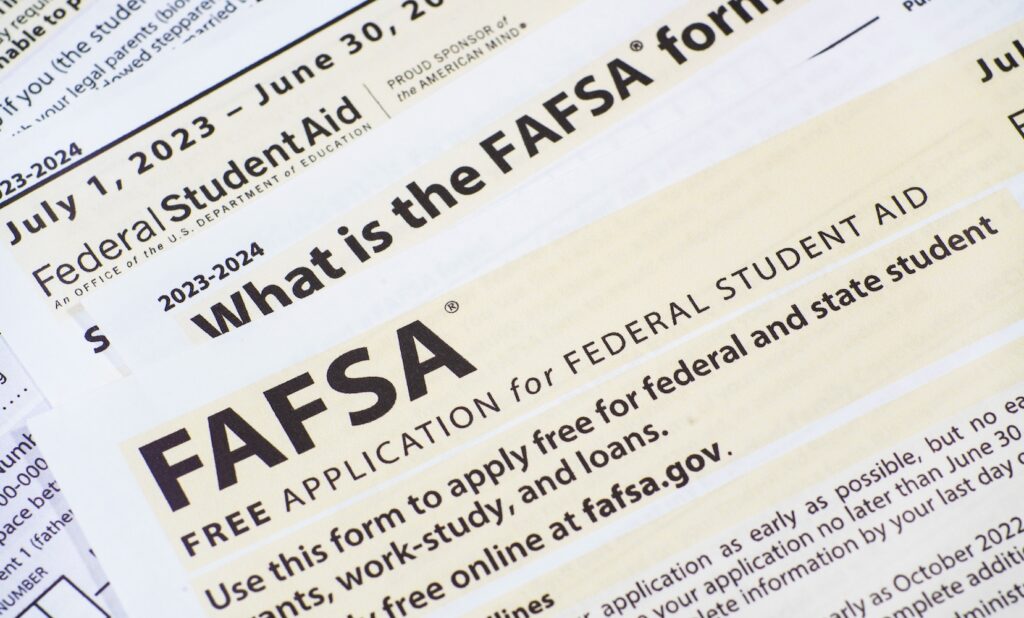Feds’ college financial aid change would penalize multi-child families
(The Daily Signal) – Families across the country are struggling with the high cost of gas, groceries, and rent. Now they can add one more financial hardship to the list: the cost…

(The Daily Signal) – Families across the country are struggling with the high cost of gas, groceries, and rent. Now they can add one more financial hardship to the list: the cost of college.
The Biden administration is doing everything it can to make college more expensive.
President Joe Biden’s various schemes to cancel student loan debt are burdening working taxpayers who could not—or chose not to—go to college by forcing them to pay someone else’s loan. The “forgiveness” proposals are a boon to wealthy universities and graduate students, perhaps some of the most privileged people on the planet.
Student loan cancellation has understandably drawn the ire of working Americans who are already struggling with inflation and are now being insulted and financially burdened with a bill for someone else’s gender studies degree.
But a forthcoming change to the Free Application for Federal Student Aid (FAFSA)—set in motion in late 2020 as a priority of then-Sen. Lamar Alexander, R-Tenn.—will hit families sooner. It’s a discrete change to something known as the “expected family contribution,” which could balloon the price of college for families with more than one child.
Starting next year (applications for the 2024-25 academic year), families with more than one child in college could face significantly higher costs than in previous years.
The expected family contribution dictates the size of Pell Grants for eligible students, is used to determine institutional aid and is the guideline for other subsidies a student might receive to offset the cost of college, such as subsidized student loans and work-study programs.
Access to these subsidies is determined in part through the expected family contribution section of the FAFSA and is calculated as the difference between a student’s anticipated cost of attendance (tuition, living expenses, etc.) and what his family is likely to be able to contribute to help pay that cost.
Notably, as Wellesley College’s Phillip Levine explains, the current expected family contribution formula “is reduced proportionally to the number of that student’s siblings who are enrolled in college.” But the new Student Affordability Index, as the expected family contribution will now be known, eliminates that sibling discount for families.
In other words, if, based on the current expected family contribution, a family was estimated to be able to contribute $10,000 per year to their child’s tuition, their expected contribution would be reduced to $5,000 if that student also had a sibling in college at the same time—which makes sense.
As any parent (or third grader who can add and subtract) knows, having to pay two college tuitions simultaneously likely means families have less to contribute to each individual child’s college costs.
The Wall Street Journal reported on data calculated by the Brookings Institution, which found that “a family with $150,000 in income with two children in college would see eligibility for aid at private colleges fall $12,600 in a year.”
The Journal continues:
Iowa College Aid, a state agency, simulated the impact of this change on a dependent student from a family of four with $60,000 in income and a farm net worth of $1 million. Under the new formula, the amount they would be expected to pay for the child’s college would increase to $41,056 from $7,626.
As the Washington Examiner’s Tim Carney put it, “The new system basically tells the second child, ‘Sorry, Bud.’”
To compound the problem, the Biden administration’s rollout of the new FAFSA form has been a complete disaster. As higher education scholar Preston Cooper notes, the Department of Education was three months behind schedule with the launch, introduced an accounting error that undercounted the cost of student aid by $2 billion, and made the form available for as short as 30 minutes per day, during which time “students reported constant glitches and lockouts.”
Cooper reports that, as a result, just 16% of high school seniors had submitted their FAFSA by January, compared with the roughly 40% that is typical.
A combination of bad policies in recent years now means Americans are being forced to pay off other people’s student loans while getting hit at the same time with a forthcoming large-family penalty. And colleges rub salt in the wound through a leftist monoculture that mocks the very idea of strong nuclear families, branding the two-parents-married family as perpetrators of “white heteropatriarchal family supremacy.”
It’s long past time for Congress to cut off the open spigot of federal aid to higher education. Recent moves go in the opposite direction, further burdening already overburdened taxpaying families.



